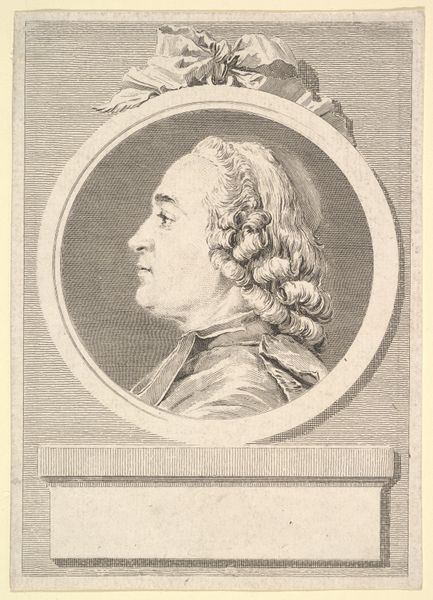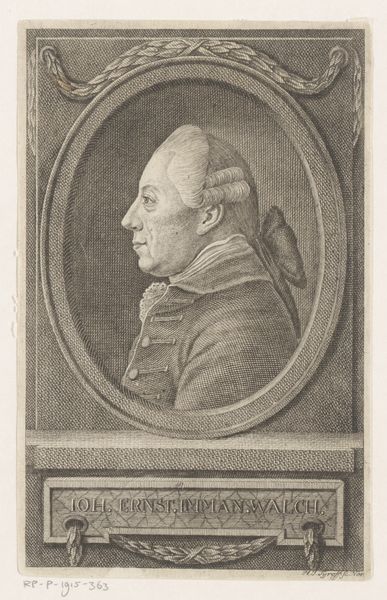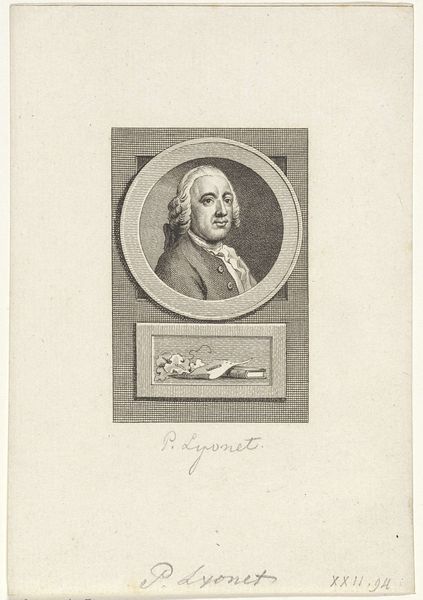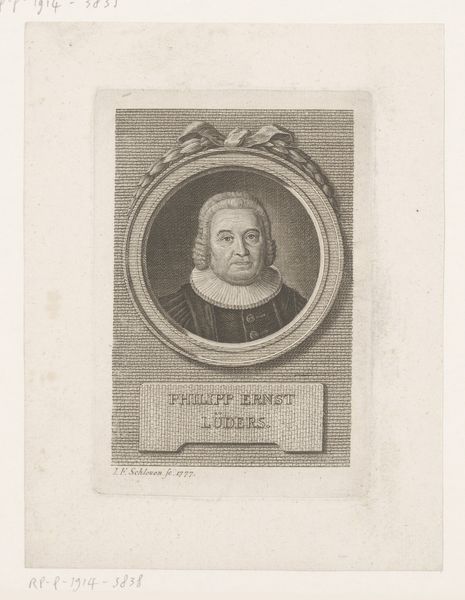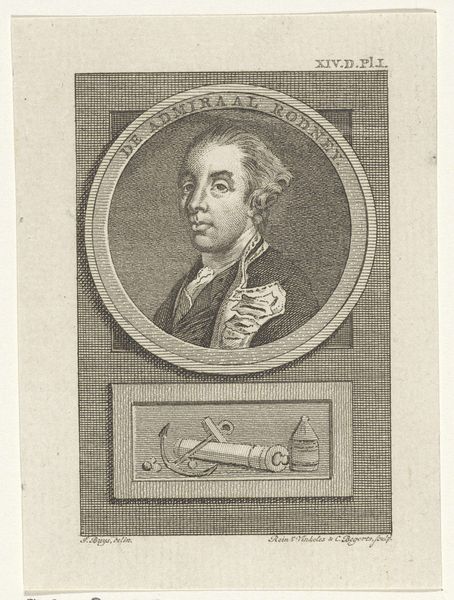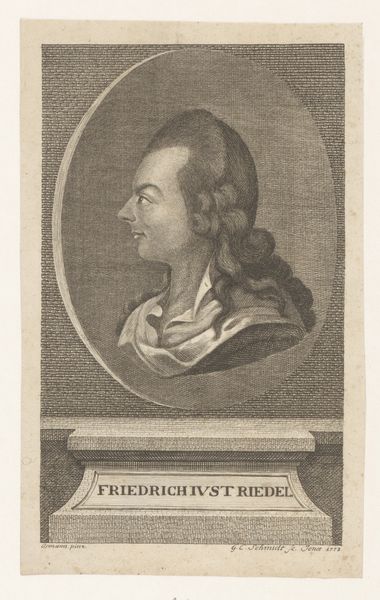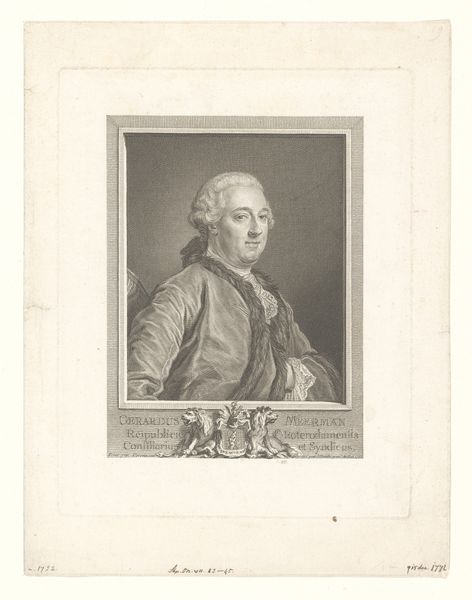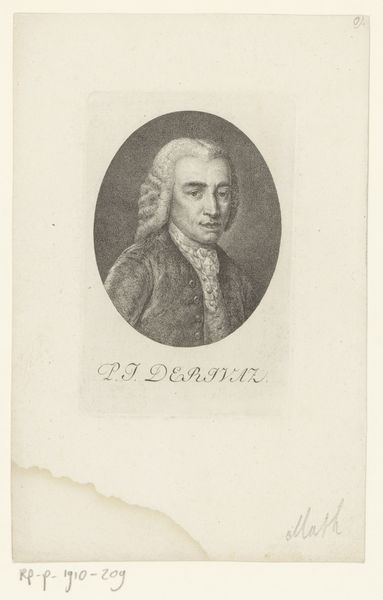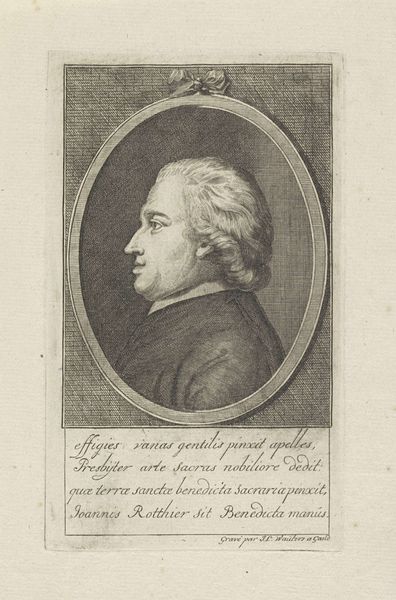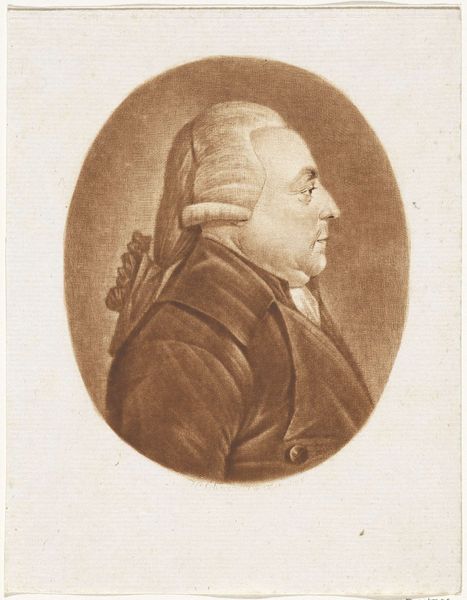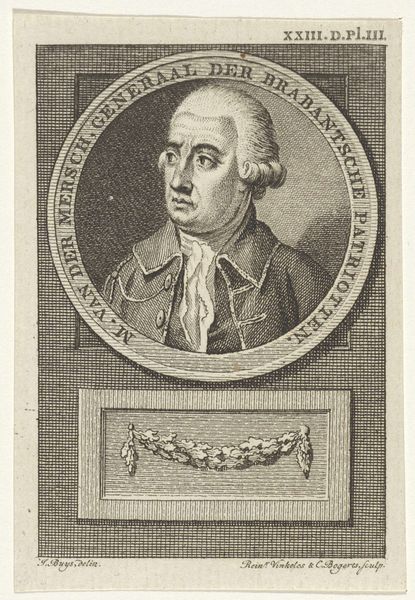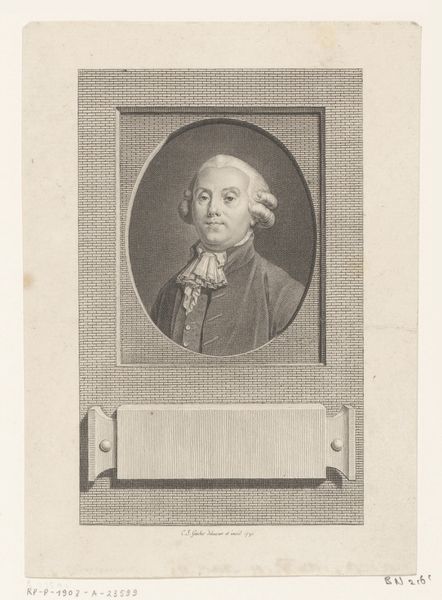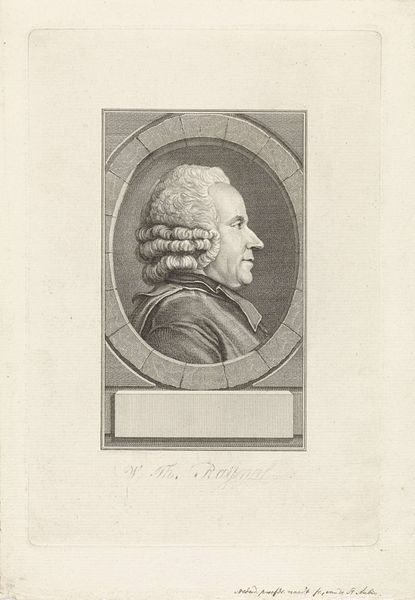
print, engraving
#
portrait
#
neoclassicism
# print
#
engraving
#
realism
Dimensions: height 127 mm, width 87 mm
Copyright: Rijks Museum: Open Domain
Curator: Ah, a print! Allow me to introduce "Portret van Hans Caspar Hirzel," an engraving created between 1759 and 1815 by Heinrich Pfenninger. Editor: Stark. Intensely detailed, despite the monochrome. He looks... well, important. Maybe a touch self-satisfied? The oval framing enhances that sense of formality, doesn't it? Curator: Absolutely. Pfenninger has masterfully employed the Neoclassical style. It presents Hirzel, whoever he may be, with gravitas and perhaps just a whisper of Enlightenment ideals shining through. Look closely at the crispness of the lines, the detail in his wig... Editor: Precisely! The wig itself screams labor. Someone had to meticulously curl and powder it. It speaks volumes about social performance in the period and the processes required for his class to maintain it, almost like adornment with material consequence. What’s your take on that intense, focused expression? Is it a man pondering weighty matters? Curator: Or perhaps simply sitting for his portrait! But truly, it gives us insight into a world where appearances mattered immensely. Imagine the skill involved in translating such a figure into an engraved print. Pfenninger used a burin, meticulously carving lines into a copper plate to capture light and shadow. It is astonishing to know that what we are looking at is a carefully designed fabrication and it makes us consider the production behind an “elite portrait.” Editor: I hadn't even considered the labor that would take. You're making me think about the tools, the hours... And these prints would be disseminated, reproduced. Each one passing from hand to hand like propaganda material... Do we know if Hirzel was from an influential family? Curator: We can guess, can’t we? Looking at this particular example, it definitely offers insight into societal values, production and maybe… the somewhat fraught relationship between artistry and commerce during the period. A balance, a transaction between craft and legacy, do you not agree? Editor: Absolutely. I feel enriched with some context and new possibilities in viewing! Curator: I leave inspired as well to explore and seek new historical characters, to see through art as through a magic mirror.
Comments
No comments
Be the first to comment and join the conversation on the ultimate creative platform.

